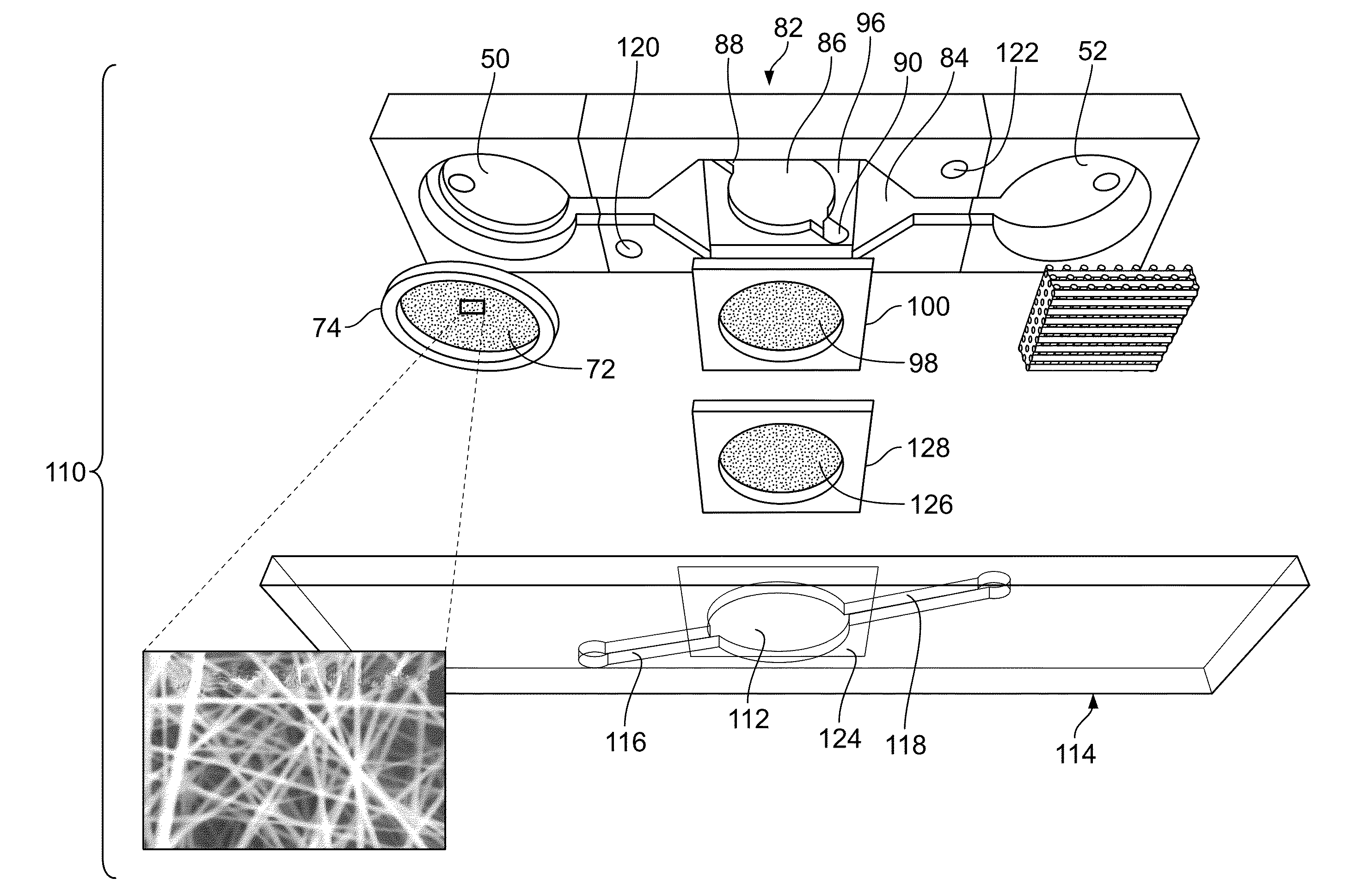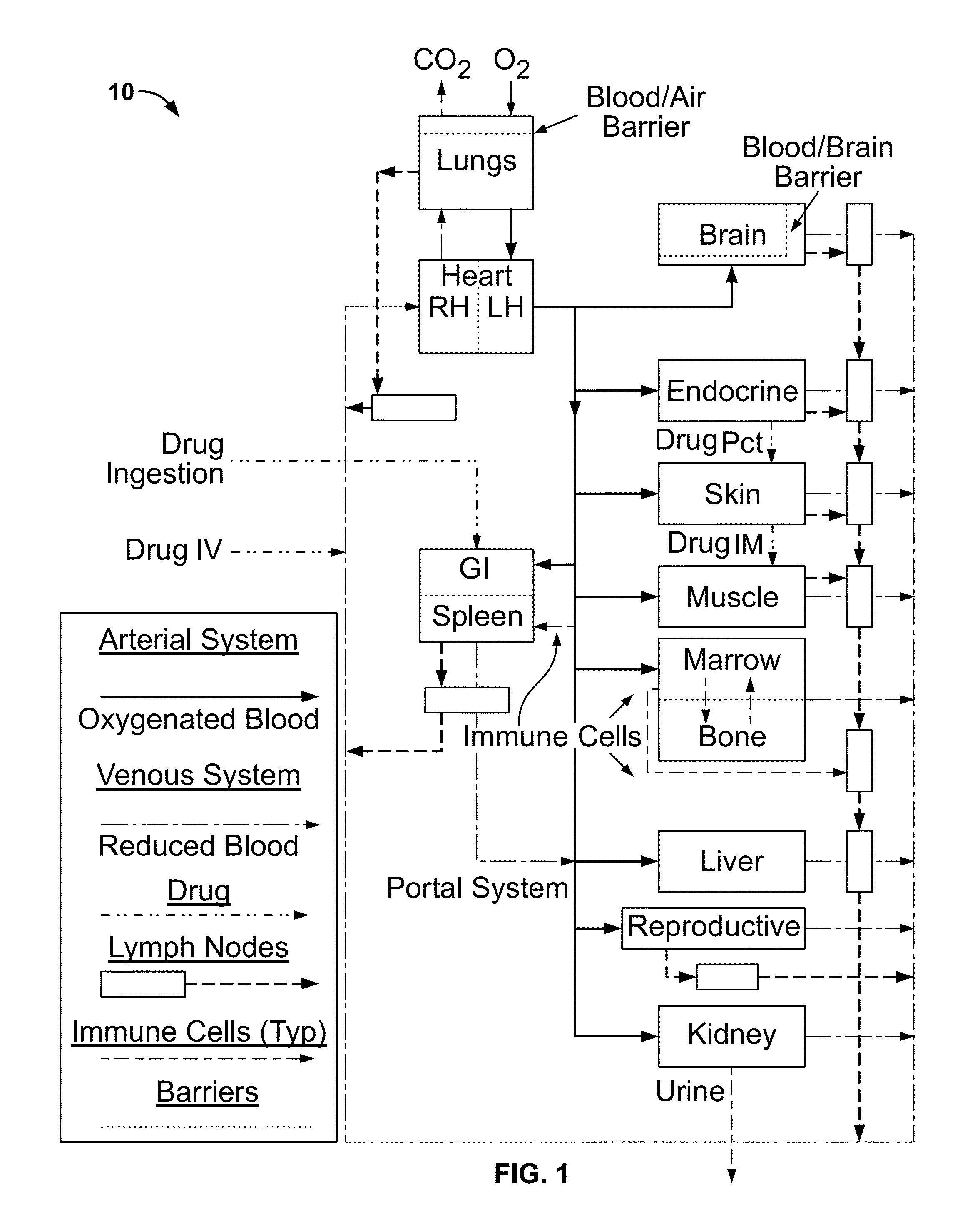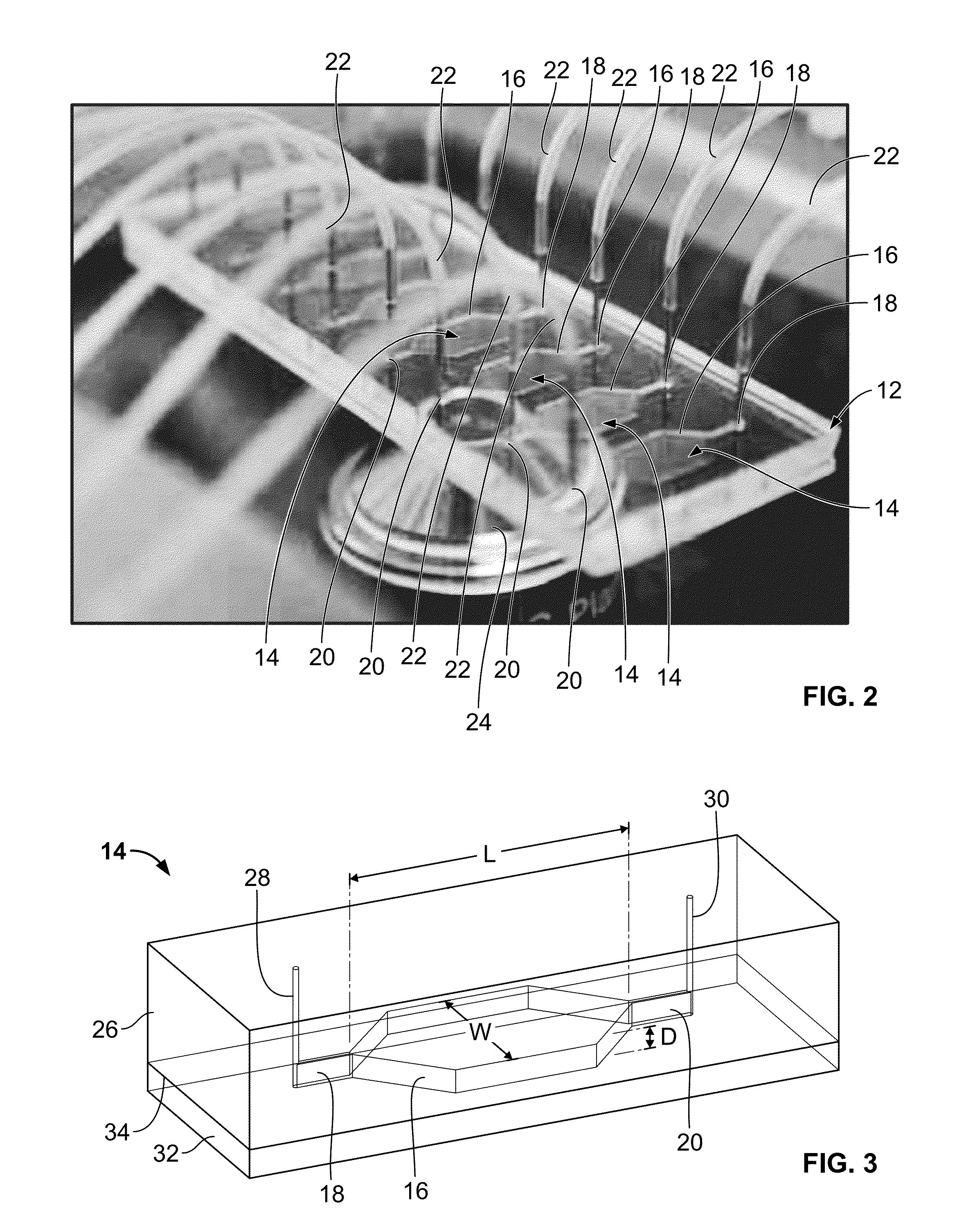Microfluidic-based cell-culturing platform and method
a microfluidic and cell-culturing technology, applied in the field of microfluidic cell-culturing platforms, can solve the problems of inability to simulate the interactions of physiological systems in animals or human bodies, disappointing results of the vitro-test platform in the animal testing or clinical trial phase, etc., and achieve the effect of rapid evaluation of drug safety
- Summary
- Abstract
- Description
- Claims
- Application Information
AI Technical Summary
Benefits of technology
Problems solved by technology
Method used
Image
Examples
example 1
Microfluidic Culturing of Breast Cancer Cells in a 3D Architecture
[0037]Human breast cancer cells (from immortalized cell line MCF-7) were incubated in a tissue culture chamber for 2 weeks with a continuous media flow at 0.8 μL / min. Initial cell attachment was seen across the entire chamber surface and continuously proliferated over time to form a 3D tissue layer having a depth of about 70-100 μm. By two weeks, nodular-like structures were seen in the culture with a small number of aggregating cells. These structures were similar to those observed in the earliest stages of tumor formation. A majority of the cells remained viable. Compared to 2D culture, MCF-7 cells grown in microfluidic chambers significantly promote cell proliferation with active morphology. By day 7, about 80% of cell confluence was seen on the microfluidic chamber surface in contrast to only about 50% on the coverslip surface of a 2D culture, suggesting that microfluidic culture not only supports the long-term cu...
example 2
Formation of Breast Cancer Nodules in the Presence of Adipose Stromal Cells
[0038]Breast cancer tumors exhibit dynamic and reciprocal communication between epithelial and stromal compartments during disease progression. In contrast to pure cultures of breast cancer cells, co-cultures with stromal cells stimulate breast cancer cells. Prolonged culture of MCF-7 cells with adipose stromal cells (ASCs) in the microfluidic chambers resulted in the formation of 3D breast tumor nodule-like structures. At three weeks of incubation, the nodule-like structures had become large enough to be recognized under a microscope, reaching 80-150 μm in diameter. Based on histological staining, the organization of these cells was consistent with their cancerous origin. The cells appeared to be transformed, having an increased nuclear / cytoplasmic ratio, and the cell mass was disorganized. Compared to a culture of MCF-7 alone, the inclusion of ASCs in the culture dramatically increased the nodular size (abo...
example 3
Regulating the Progression of Breast Cancer Tissues by Controlling the Culture Medium Flow Rate
[0039]In the microfluidic tissue culture device, cells obtained nutrition from media diffused through the chamber. A flow rate that is too low cannot deliver sufficient nutrients to the cells, resulting in tissue deterioration. In an experimental protocol, MCF-7 and ASCs were cultured for 16 days at 0.8 μL / min until large nodule-like structures had formed. The medium flow rate was then lowered to 0.3 μL / min. After 3 days at the lower flow rate, a significant change was observed: in some regions, the cultured tissue began to shrink or degenerate. Hematoxylin and eosin staining of tissue cross-sections clearly showed devitalization of cells in the cultured 3D tissues, with cells being absent from various areas.
PUM
| Property | Measurement | Unit |
|---|---|---|
| depth | aaaaa | aaaaa |
| depth | aaaaa | aaaaa |
| depth | aaaaa | aaaaa |
Abstract
Description
Claims
Application Information
 Login to View More
Login to View More - R&D
- Intellectual Property
- Life Sciences
- Materials
- Tech Scout
- Unparalleled Data Quality
- Higher Quality Content
- 60% Fewer Hallucinations
Browse by: Latest US Patents, China's latest patents, Technical Efficacy Thesaurus, Application Domain, Technology Topic, Popular Technical Reports.
© 2025 PatSnap. All rights reserved.Legal|Privacy policy|Modern Slavery Act Transparency Statement|Sitemap|About US| Contact US: help@patsnap.com



